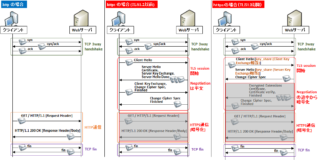

Then build it with this command: docker build -t simple-apache-httpd. e 's|^\(SSLCertificateKeyFile\).*|\1 /etc/ssl/private/ssl-cert-snakeoil.key|' \ e 's|^\(SSLCertificateFile\).*|\1 /etc/ssl/certs/ssl-cert-snakeoil.pem|' \

# enable https on port 443 with snakeoil certificates

Since they are self-signed, they will not be recognized as trusted certificates by most user-agents but that is not a problem here. These are self-signed certificates that can be used for testing. Additionally, we enable TLS encrypted connections on port 443 and for that we use the snake oil certificates provided by the ssl-cert package. This sets up an Apache httpd webserver that accepts plain-text connections on port 80 by default. To run the Apache httpd container, create a file called Dockerfile with the following contents.
#Wireshark encrypted alert software
We will run Apache httpd inside a Docker container for convenience but it would work just the same for non-containerized Apache httpd installations, whether they are installed from the distro’s software repository or self-compiled. First, we run a simple Apache httpd server that accepts plain-text connections on port 80 and TLS encrypted connections on port 443. To start off, let us look at an example, of how we can debug HTTP traffic with tshark. The debugging shown here can of course be done using the GUI-based Wireshark as well. Tshark is the CLI-based version of Wireshark and provides more or less the same capabilities for dissecting network packets. In this case it is easy enough to use a tool like tcpdump to capture the packets and inspect them with a tool like Wireshark.įor the demonstrations below, tshark is used instead of Wireshark. This is trivial when HTTP requests are sent over an unencrypted channel. To debug HTTP requests, it may be useful to capture traffic and look at the packets that are sent back and forth between the client and the server. p12 keystore: openssl pkcs12 -in proxyserver.p12 -nocerts -out encrypted.key -password pass:mc3VZAuZvgYzt6pIQq3w -passout pass:mc3VZAuZvgYzt6pIQq3wĪnd finally decrypt the private key for later use in Wireshark: openssl rsa -in encrypted.key -out decrypted.This entry was posted in Security and tagged apache security ssl tcpdump tls tshark wireshark on by Simon Studer Next you can extract encrypted RSA private key from the. keytool command keytool -importkeystore -srckeystore proxyserver.jks -destkeystore proxyserver.p12 -srcstoretype JKS -deststoretype PKCS12 -srcstorepass mc3VZAuZvgYzt6pIQq3w -deststorepass mc3VZAuZvgYzt6pIQq3w Then you need to convert JKS keystore to PKCS12 via i.e. If you cannot obtain the RSA private key from the website you're testing you can still attempt to obtain it using JMeter's HTTP(S) Test Script Recorder you need to first generate a MITM proxy keystore and make JMeter aware of this keystore by modifying the following JMeter Properties: =proxyserver.jks Once done you should be able to decrypt the outgoing requests using Wireshark. Once done you need to configure protocol dissector using the aforementioned private key in Wireshark - Preferences - Protocols - TLS JMeter knows nothing about this SSLKEYLOGFILE environment variable, if you want to capture encrypted traffic originating from JMeter via Wireshark you will need to go for RSA key approachįirst you need to get the private key from the website you're testing.


 0 kommentar(er)
0 kommentar(er)
